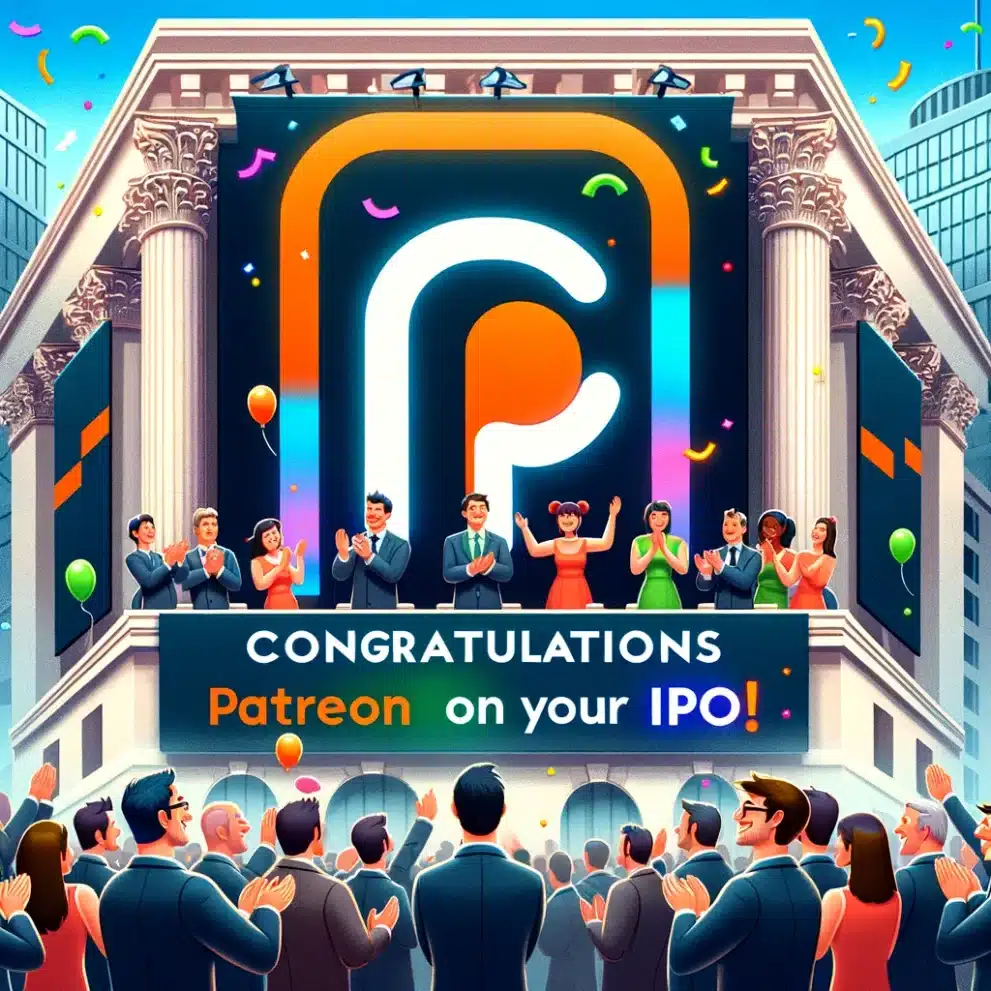
Patreon is a unique player in the tech industry, primarily focusing on providing a platform for content creators to receive funding directly from their audience. Founded in 2013 by musician Jack Conte and developer Sam Yam, Patreon was created to address the challenge many artists and creators face: monetizing their work and earning a sustainable income. For more on a potential Patreon IPO, see below.
The platform operates on a membership model, where fans, or “patrons,” pay a subscription fee to access exclusive content from their favorite creators. This model has proven to be highly effective, especially for artists, musicians, podcasters, writers, and other creatives who traditionally relied on ad revenue or sporadic project payments. On Patreon, creators can offer different tiers of membership, each with its own set of perks and content, allowing fans to choose how much they want to pay and what they receive in return.
One of Patreon’s key strengths is its ability to foster a direct connection between creators and their audience. This not only provides financial support to the creators but also builds a sense of community around their work. Patrons often feel more invested in the creator’s success, as they are directly contributing to it.
Moreover, Patreon stands out for its adaptability and inclusiveness, catering to a wide range of creative fields. Whether it’s a webcomic artist, a video game developer, or a podcast team, creators of all types find a home on Patreon where they can monetize their passion and connect with their audience in a meaningful way.
In a digital landscape where content monetization is often challenging and subject to the whims of advertising algorithms, Patreon offers a stable and creator-friendly alternative. It empowers creators to take control of their financial success and fosters a new, more direct form of the creator-audience relationship. This approach has not only benefited individual creators but also contributed to the diversification and enrichment of the digital creative landscape.
Patreon IPO?
According to the website BestStocks, Patreon is not planning an IPO, despite filing to do so in 2021.
The problems are a bad IPO environment and a huge drop in valuation.
Although Patreon’s last known valuation was at $4 billion in April 2021, the company experienced a 70% drop shortly thereafter. However, this should not be overly alarming as it is normal for private companies to experience fluctuations in their valuations. This drop can be attributed to various factors such as market conditions, internal operational issues or competitive pressures. But with more than five million patrons and over 200,000 creators on its platform, Patreon remains a significant player in the online content creation industry.
Patreon Competitive Advantage
Patreon’s competitive advantage in the digital content space stems from its distinctive approach to content monetization and community building. Unlike traditional advertising-based revenue models, Patreon focuses on direct funding from audiences to creators, which fosters a more stable and predictable income stream. This model is particularly advantageous for niche creators and those with smaller, more dedicated fanbases who might not thrive under ad-based revenue systems that favor large viewership numbers.
The platform’s emphasis on building a close-knit community between creators and their patrons is another key aspect of its competitive edge. This sense of community not only encourages ongoing financial support from fans but also creates a more engaged and loyal audience. Creators can offer exclusive content, early access, and other perks to their patrons, further enhancing this relationship.
Patreon’s adaptability across various creative fields also contributes to its advantage. It caters to a wide range of creators, from artists and musicians to podcasters and YouTubers, making it a versatile platform for different types of content. This inclusivity has allowed Patreon to tap into a diverse creator base, each with its own unique audience.
Additionally, Patreon’s user-friendly interface and focus on creator autonomy offer significant benefits. Creators have control over their content, how it’s monetized, and how they interact with their audience, which is not always the case with other platforms that have stricter content guidelines or algorithms that dictate visibility.
In essence, Patreon’s competitive advantage lies in its creator-centric model that prioritizes direct audience support, community engagement, and creative freedom. This approach not only benefits the creators but also resonates with audiences who seek a more meaningful connection with the creators they support.
Patreon Competitors
Patreon operates in a unique niche at the intersection of content creation and crowdfunding, but it does face competition from several companies that offer similar or related services:
- Kickstarter and Indiegogo: While these platforms are more project-based and typically used for one-time funding goals, they compete with Patreon in the broader crowdfunding space. Creators often use Kickstarter or Indiegogo for specific projects, as opposed to the ongoing support model of Patreon.
- SubscribeStar: This platform is similar to Patreon in that it offers a subscription-based model for creators to receive support from their audience. It is often considered an alternative for creators seeking fewer content restrictions.
- OnlyFans: Primarily known for adult content, OnlyFans also operates on a subscription model where creators can earn money directly from their fans. It has expanded to include a range of content types, positioning it as a competitor in the direct-to-consumer funding space.
- Ko-fi: Ko-fi offers a more casual, tip-jar style approach to creator support, allowing fans to make one-time donations. It’s a simpler alternative to the subscription models of Patreon and SubscribeStar.
- Memberful: Owned by Patreon, Memberful allows creators to set up their own subscription service on their websites. It competes in the same space by offering more control and customization for creators.
- YouTube Memberships and Twitch Subscriptions: These platforms provide monetization options for video creators and streamers. While they are more specific to their respective platforms (YouTube and Twitch), they offer similar subscription-based support models for creators.
Each of these competitors offers different features and focuses, catering to various aspects of the creator economy. Kickstarter and Indiegogo are ideal for one-time projects, SubscribeStar and OnlyFans for ongoing content with different levels of content moderation, Ko-fi for one-time donations, and YouTube and Twitch for video-based content creators. This diverse competitive landscape reflects the evolving ways in which creators seek support and connect with their audiences.




 Share
Share Tweet
Tweet Share
Share




Comment